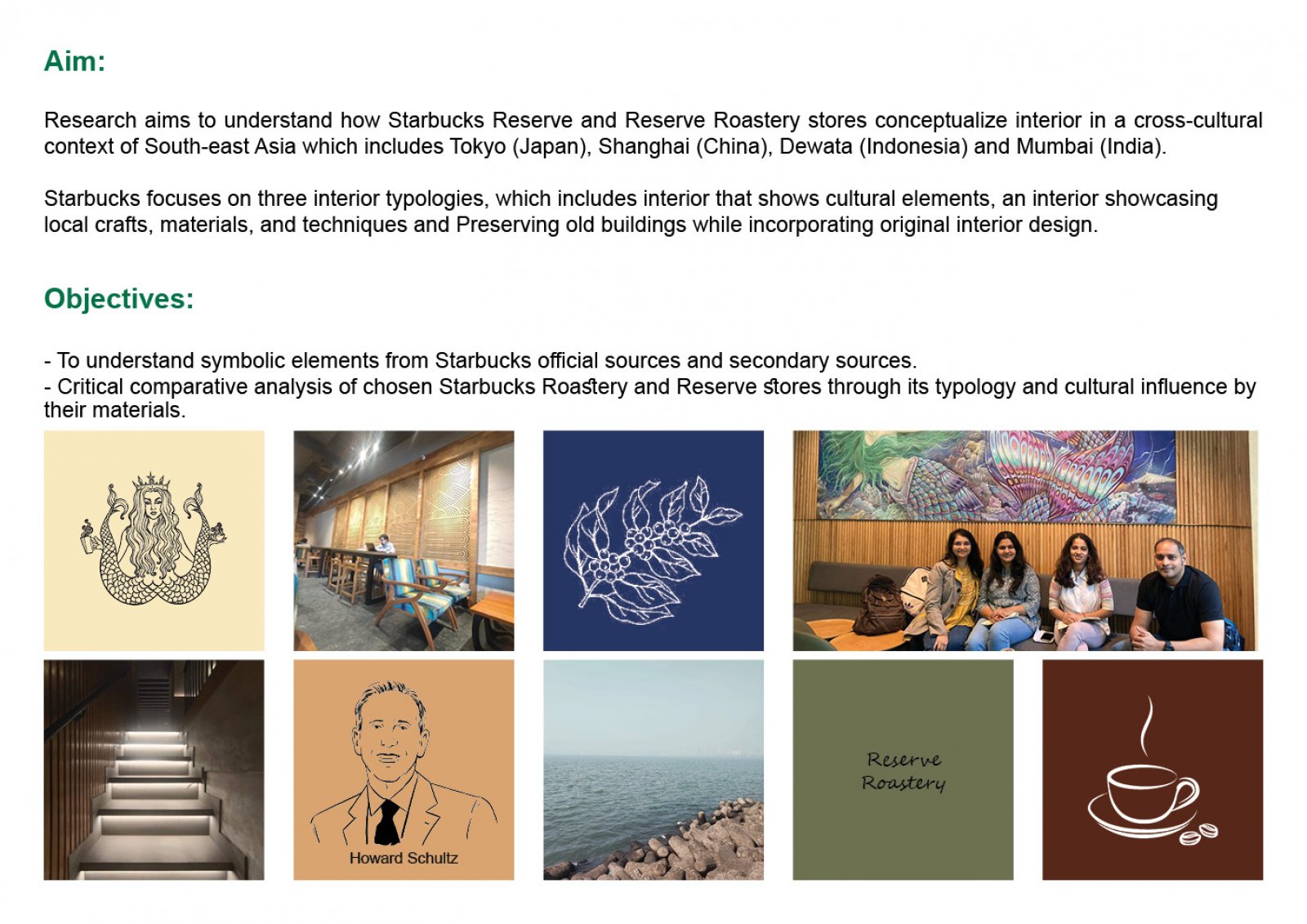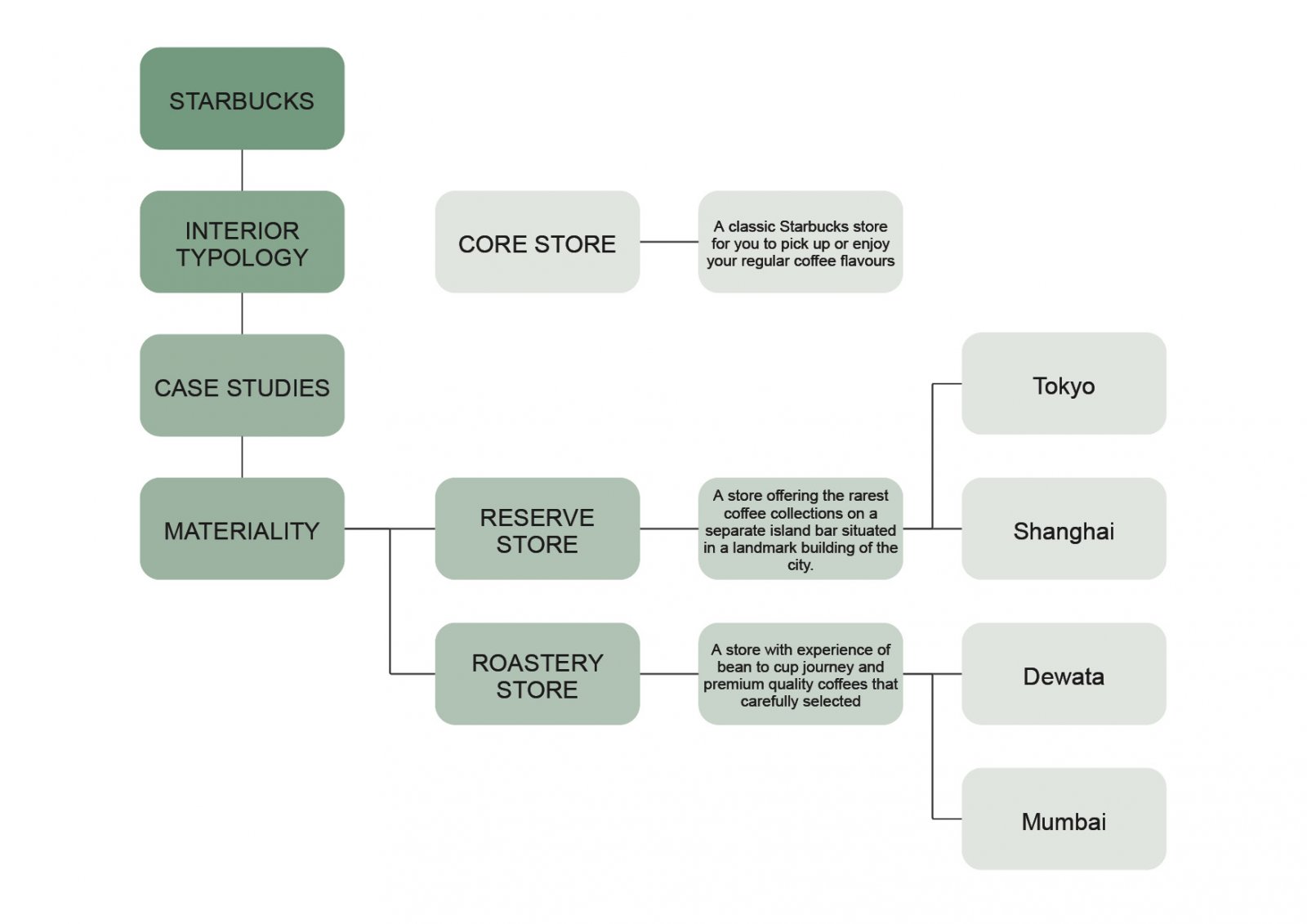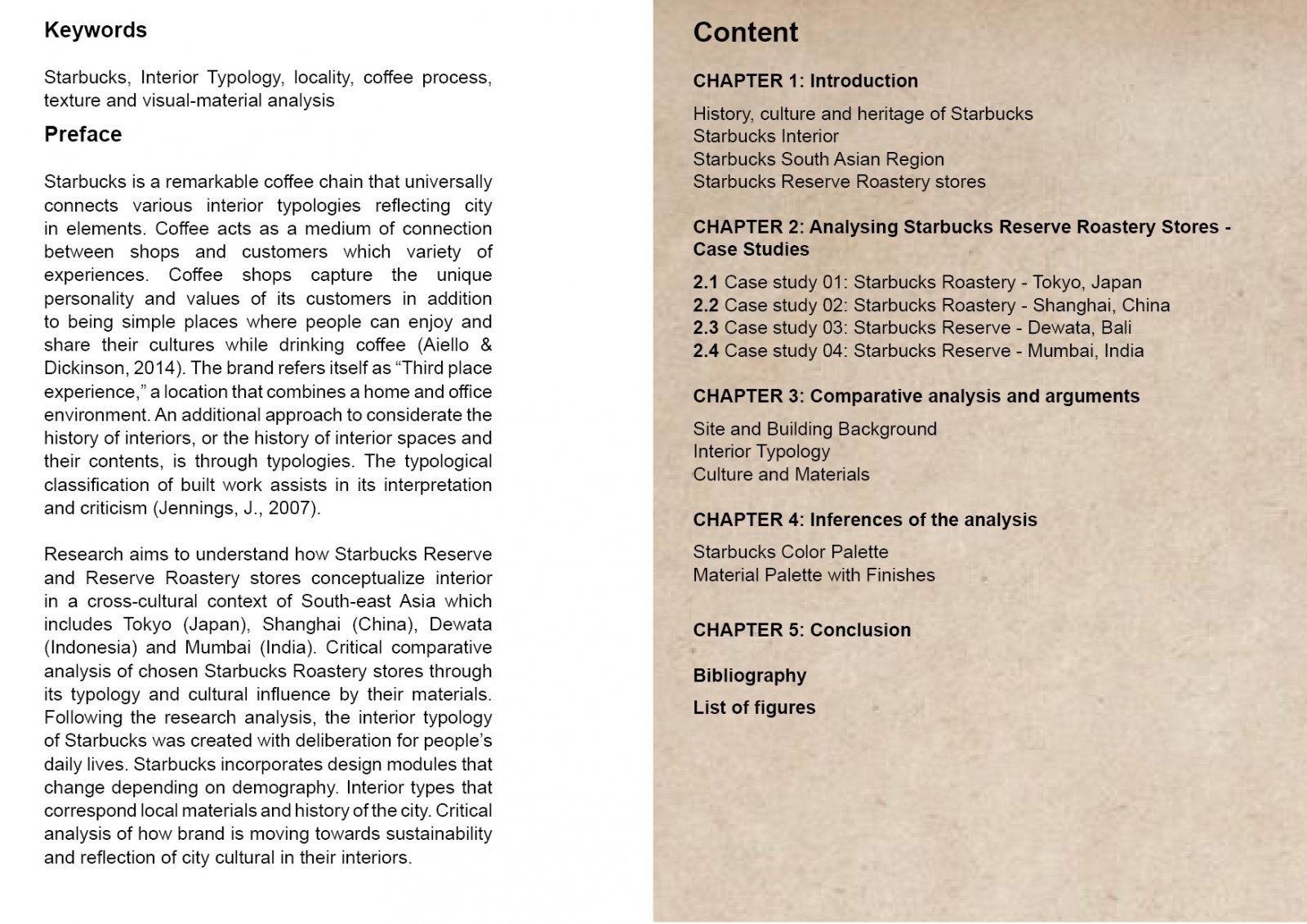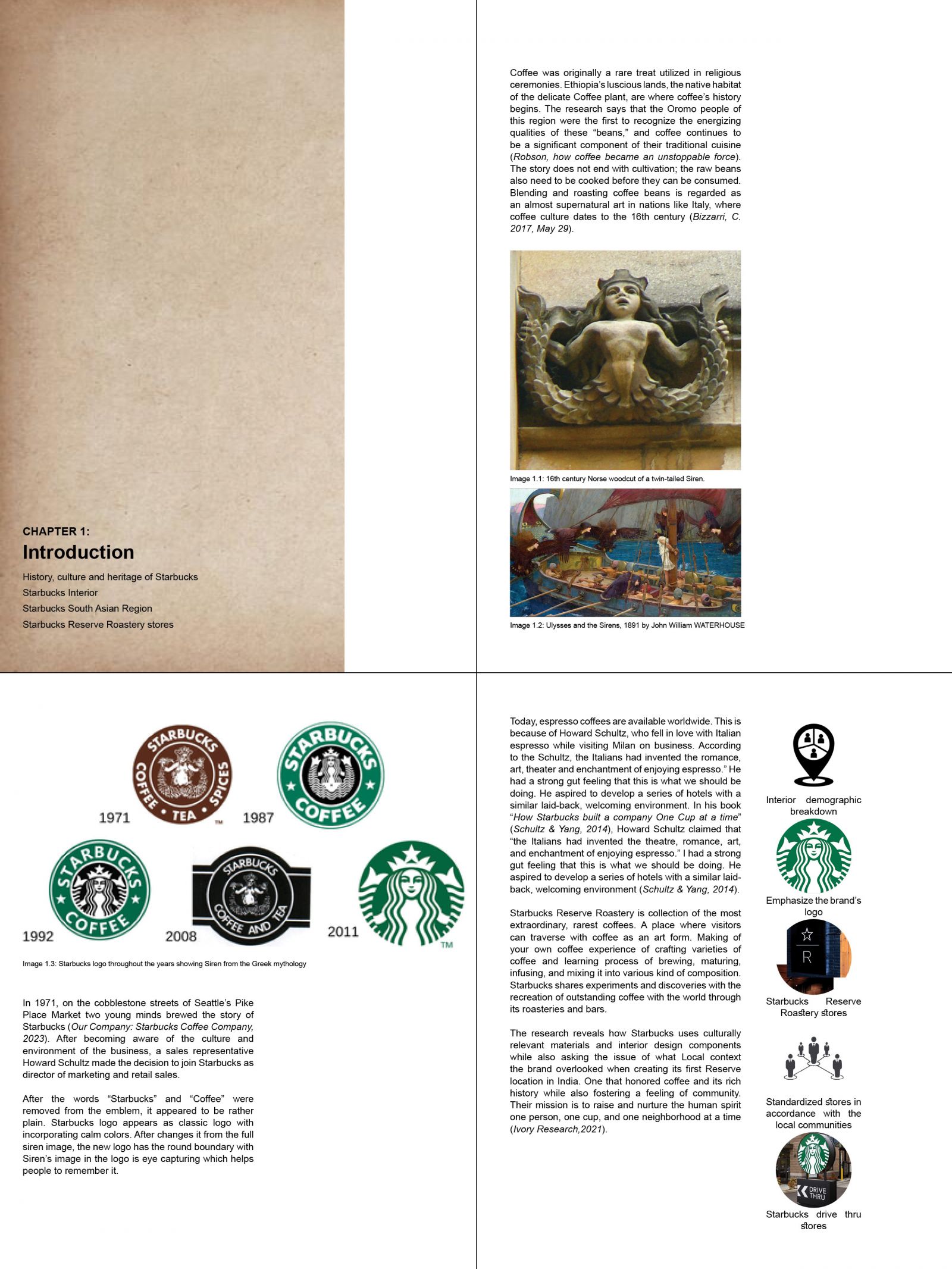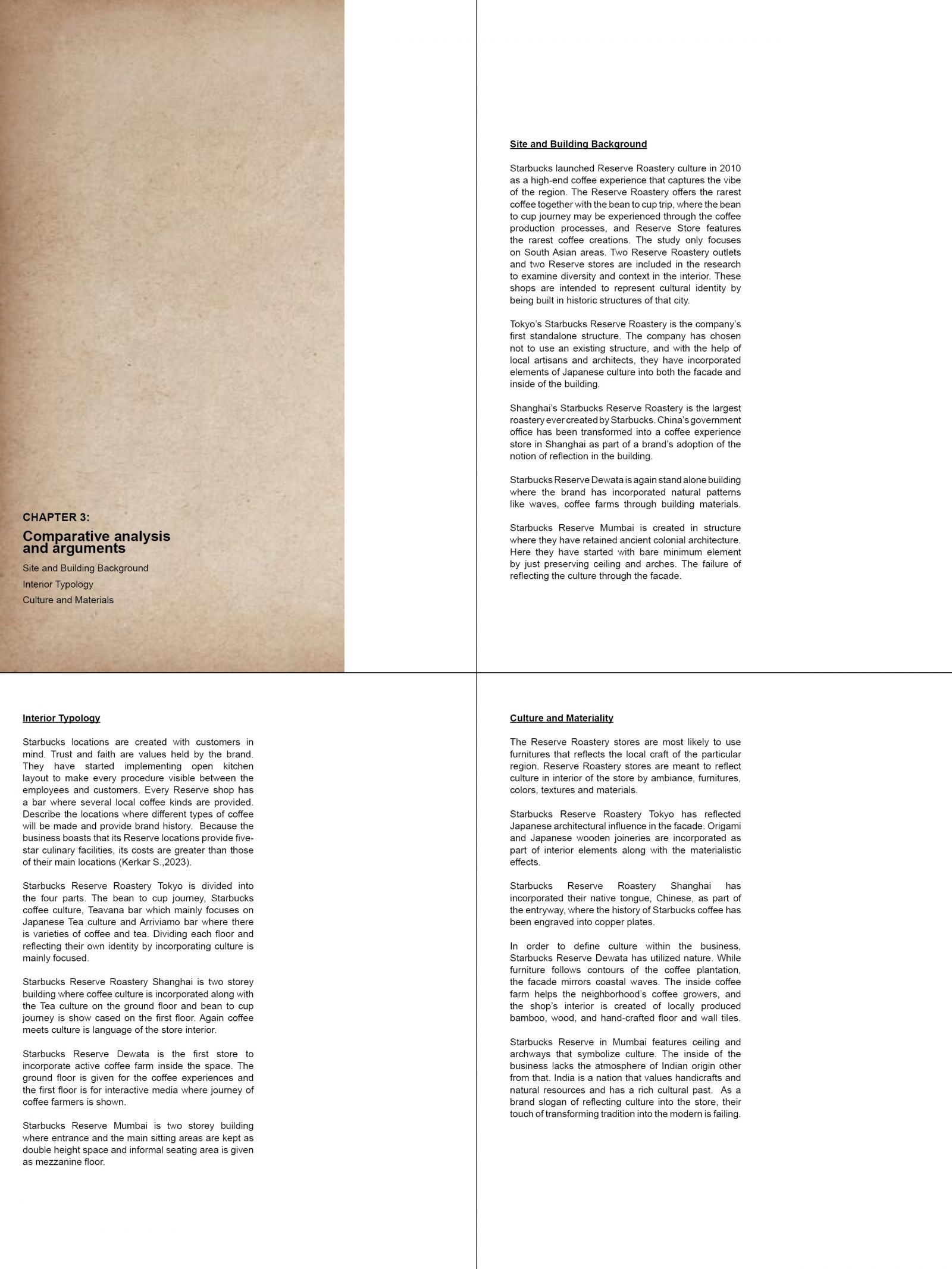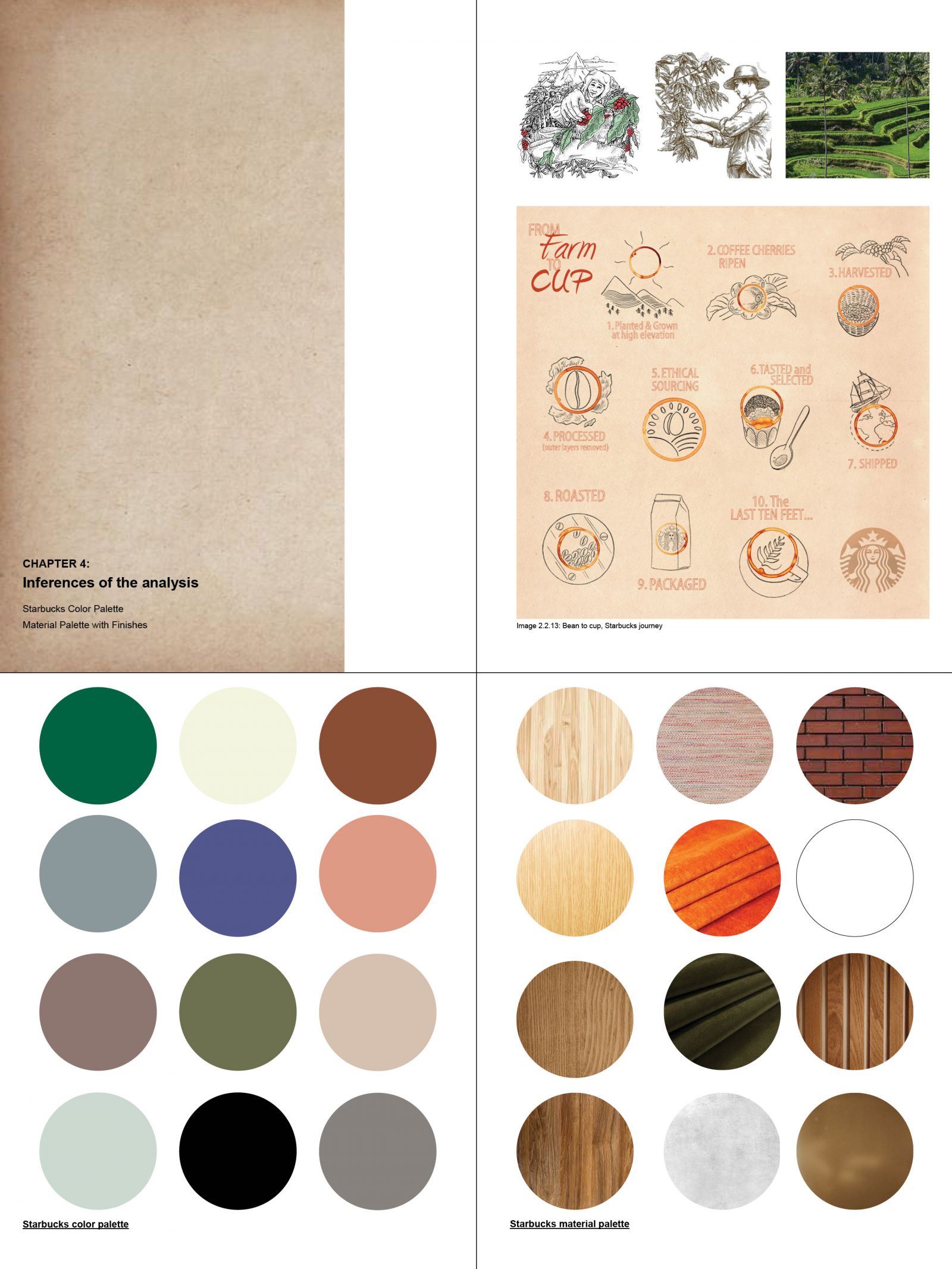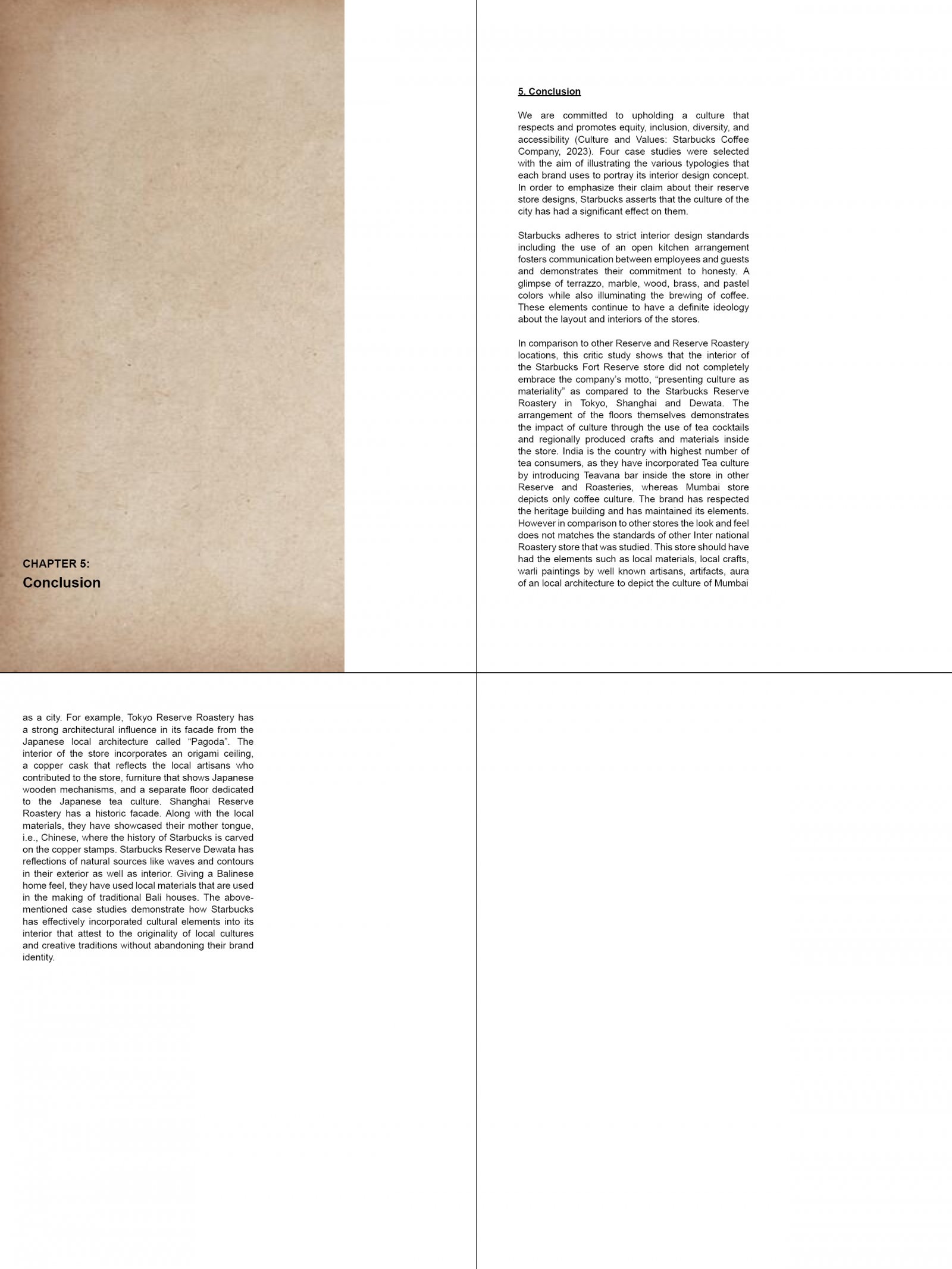Your browser is out-of-date!
For a richer surfing experience on our website, please update your browser. Update my browser now!
For a richer surfing experience on our website, please update your browser. Update my browser now!
Starbucks is a remarkable coffee chain that universally connects various interior typologies reflecting city in elements. Coffee acts as a medium of connection between shops and customers which variety of experiences. The brand refers itself as “Third place experience,” a location that combines a home and office environment. An additional approach to considerate the history of interiors, or the history of interior spaces and their contents, is through typologies. The typological classification of built work assists in its interpretation and criticism (Jennings, J., 2007). Research aims to understand how Starbucks Reserve and Reserve Roastery stores conceptualize interior in a cross-cultural context of South-east Asia which includes Tokyo (Japan), Shanghai (China), Dewata (Indonesia) and Mumbai (India). Critical comparative analysis of chosen Starbucks Roastery stores through its typology and cultural influence by their materials. Following the research analysis, the interior typology of Starbucks was created with deliberation for people’s daily lives. Starbucks incorporates design modules that change depending on demography. Interior types that correspond local materials and history of the city. Critical analysis of how brand is moving towards sustainability and reflection of city cultural in their interiors. Drive Link

